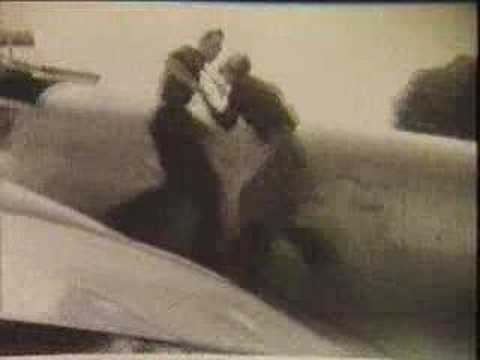The mystery behind the Amelia Earhart’s last flight remains unsolved and well discussed to this day.
As an iconic American aviation pioneer and the first female to fly across the Atlantic Ocean, Amelia Earhart is one of the most heroic women in history.
During an attempt to make a circumnavigational flight of the globe in 1937 in a Purdue-funded Lockheed Model 10 Electra, Earhart disappeared over the central Pacific Ocean near Howland Island. Fascination with her life, career and disappearance continues to this day.
Take a look at this recently released rare footage of Amelia preparing for her last, tragic flight.
Although Earhart had gained fame for her transatlantic flight, she endeavored to set an “untarnished” record of her own.
Shortly after her return, piloting Avian 7083, she set off on her first long solo flight which occurred just as her name was coming into the national spotlight. By making the trip in August 1928, Earhart became the first woman to fly solo across the North American continent and back.
Gradually her piloting skills and professionalism grew, as acknowledged by experienced professional pilots who flew with her. General Leigh Wade flew with Earhart in 1929: “She was a born flier, with a delicate touch on the stick.”
Earhart subsequently made her first attempt at competitive air racing in 1929 during the first Santa Monica-to-Cleveland Women’s Air Derby (nicknamed the “Powder Puff Derby” by Will Rogers), which left Santa Monica on August 18 and arrived at Cleveland on August 26.
During the race, she settled into fourth place in the “heavy planes” division. At the second last stop at Columbus, her friend Ruth Nichols, who was coming third, had an accident while on a test flight before the race recommenced. Nichols’ aircraft hit a tractor at the start of the runway and flipped over, forcing her out of the race.
At Cleveland, Earhart was placed third in the heavy division.
In 1930, Earhart became an official of the National Aeronautic Association where she actively promoted the establishment of separate women’s records and was instrumental in the Fédération Aéronautique Internationale (FAI) accepting a similar international standard.
In 1931, flying a Pitcairn PCA-2 autogyro, she set a world altitude record of 18,415 feet (5,613 m) in a borrowed company machine.
While to a reader today it might seem that Earhart was engaged in flying “stunts,” she was, with other female flyers, crucial to making the American public “air minded” and convincing them that “aviation was no longer just for daredevils and supermen.”
During this period, Earhart became involved with The Ninety-Nines, an organization of female pilots providing moral support and advancing the cause of women in aviation. She had called a meeting of female pilots in 1929 following the Women’s Air Derby. She suggested the name based on the number of the charter members; she later became the organization’s first president in 1930.
Earhart was a vigorous advocate for female pilots and when the 1934 Bendix Trophy Race banned women, she openly refused to fly screen actress Mary Pickford to Cleveland to open the races.[
